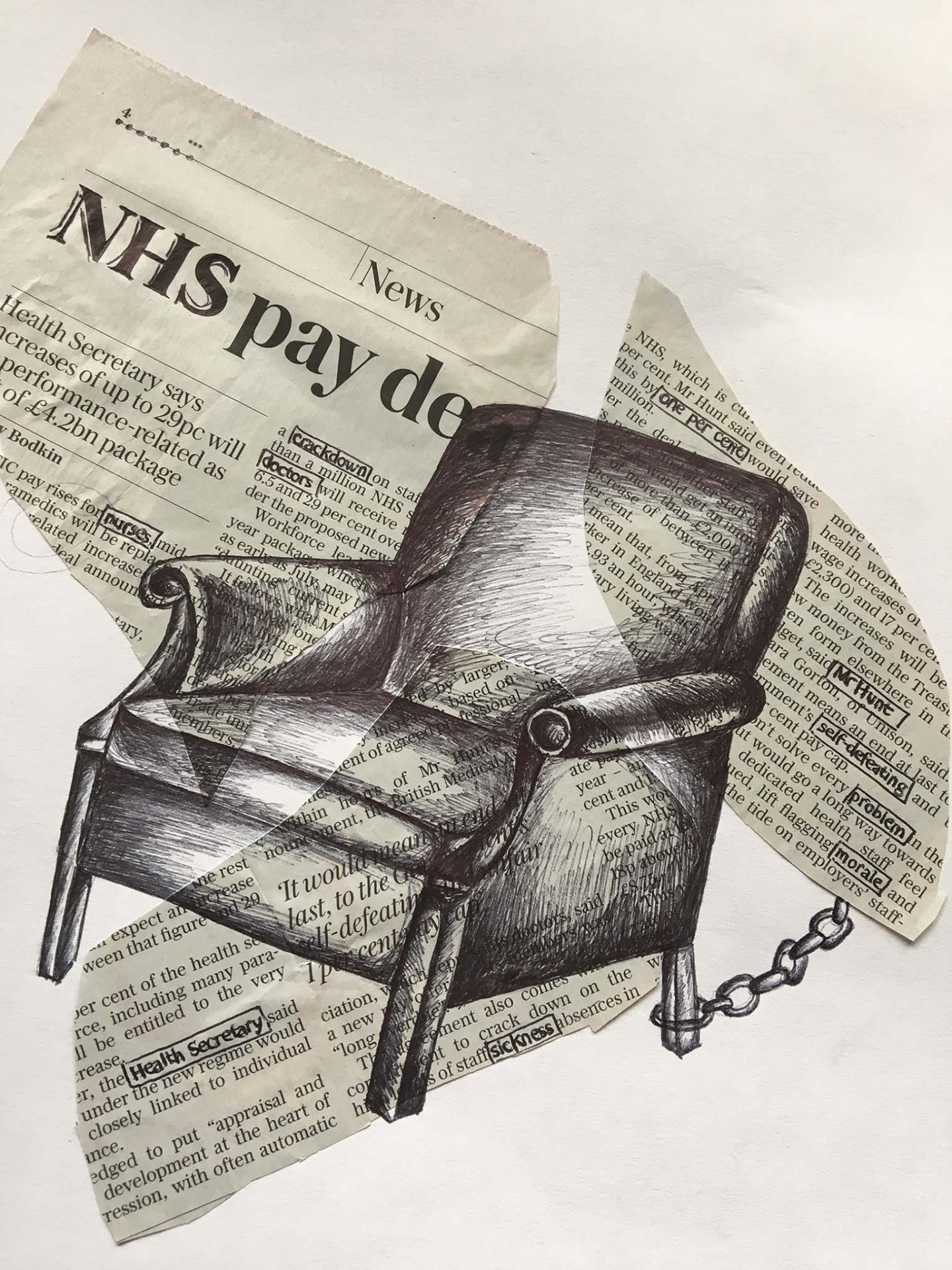The Arms of isolation
To help us empathise and gain a deeper understanding of her situation, I used the analogy of her armchair. Not only did she feel physically constrained within its arms for many hours of the day, but this piece of furniture had also begun to represent her years of ill-health. Looking in from the outside, it felt as if every negative connotation of illness was confined within the arms of this chair.
When discussing the ways in which Rhoda had tried to improve her coping strategies, we came across the subject of a regular coffee group which she had started to attend. Meeting new people and learning skills in a group setting had empowered this patient and greatly improved her mental health. Through expanding her social network, she was able to meet up in more accessible places and learn from the experiences of others.
When trying to represent this in my drawing, I decided to select the simple medium of biro to represent how prevalent the problem of loneliness is in our society. For me the chain not only represents the feeling of being trapped within this negative cycle, but also helps to bridge the gap between this individual patient and health service who has a responsibility for her care. Rhoda explained that during the toughest times she felt as if her whole life revolved around the NHS and the appointments she was provided with. Subsequently bad press surrounding cuts and malpractice felt as if they were directly impacting upon her personal care. By highlighting specific words in the article, I have attempted to outline a lay perspective of the NHS and invite the viewer to consider the extent to which their perception of the health care service is shaped by the media.
Effective Consulting, Year One, 2017- 2018
Creative Piece Commended

I think this drawing is simple yet very effective. It demonstrates how some people can feel trapped within their illness, and unable to escape it. The colours that have been used also highlight the emotions the patient may feel, perhaps depressed or anxious and lost within their disease. The mundane setting of the drawing, also shows that loneliness is present throughout the whole of society, no matter your age, and hints that the NHS can make such simple changes to try and reduce this loneliness for everyone.
A simple monotone drawing perfectly reflects the story behind the art. The chain from the armchair to the newspaper suggests that the person becomes locked in place, only worsened by the negative media coverage of the NHS. The patient, who is housebound, struggles to stay positive as is less able to engage in social events than before. It reminds us that the poor morale in the NHS is actually be affecting the patient, something we could work on as a community. However, there is a glimmer of hope, the patient perseveres and finds ways to maintain her social and mental health. Furthermore, the problems highlighted are fixable. This art invites us to produce a solution.